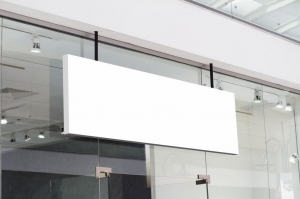please click here:
https://www.yongxinumbrella.com/reverse-umbrella.html
Introduction: Rethinking the Umbrella
On a rainy day, the usual scenario plays out: you open your umbrella, it drips as you close it, you fumble to get into the car or through a doorway, and your coat or floor ends up wet. The reverse umbrella (also called inverted or inside‑out umbrella) turns this script upside down—literally. Instead of collapsing outward, it folds inward, trapping the wet surface inside and leaving the dry side outward. This design innovation aims to solve everyday frustrations with traditional umbrellas.
In this article I'll walk through the origin, mechanics, pros and cons, how to choose a good reverse umbrella, comparisons with conventional models, tips for use and maintenance—and finally, answer some common questions. A comparison table helps clarify trade‑offs, and I aim to bring fresh practical perspective rather than rehash clichés.
What Exactly Is a Reverse Umbrella?
A reverse umbrella is a variant of umbrella whose folding mechanism is inverted relative to the traditional model. When closing, the canopy folds inward (wet surface in), rather than folding outward (wet surface exposed). The outward face when closed is dry, or at least drier, making it easier to handle.
Key features that often accompany this mechanism:
-
Double‑layer or dual canopy structure: Many reverse umbrellas use two layers of fabric to assist the inward folding and improve wind resistance.
-
C‑shaped or ergonomic handle: Some adopt a handle design that allows hooking over the wrist, freeing one hand.
-
Standable design: Because it closes “upward,” some models can stand upright on the floor without a stand, allowing water to drip downward into the umbrella interior.
-
Automatic vs manual operation: Some models include a button to open/close automatically, which can be especially useful in confined spaces.
-
Windproof features: Reinforced ribs, flexible joints, venting—these are often integrated to prevent inversion under gusts.
The effect is that when you close the umbrella, rather than water streaming down the outer surface, most of the moisture remains contained inside the folded canopy. This avoids drips on floors, car seats, or indoors surfaces.
Some manufacturers emphasize that you can partly close the umbrella and stand it upright to allow water to collect inside, rather than spreading onto the surroundings.
Why Use a Reverse Umbrella? Key Advantages
Let's explore the practical benefits of using a reverse umbrella in everyday life.
Mess Reduction and Drip Control
One of the most frequently cited benefits is the elimination of dripping. Because the wet side folds inward, water is trapped rather than spilling outward. This is especially helpful in environments like your car, a foyer, or public transit. You won't leave soggy patches or puddles behind.
Easier Entry/Exit from Cars & Tight Spaces
Traditional umbrellas often require space to open or close without hitting doors or walls. The reverse mechanism allows you to close the umbrella before fully stepping into a car, reducing the chance of exposing yourself to rain or drenching the interior.
Better Wind Resistance (Potentially)
Because many reverse umbrellas are designed with dual layers and more robust rib structures, they may better resist gusts without inverting. The inward folding can reduce the lever forces that traditionally flip umbrellas.
In tests, some models withstand moderate wind speeds without flipping.
Hands‑free or Easier Handling
With a C-shaped handle, you can hook the umbrella over your wrist or arm, leaving hands free to carry bags or use a phone. This is a design feature often paired with the reverse mechanism.
Standable & Convenient Storage
Closed in the upward orientation, many reverse umbrellas can stand on their own without needing a stand or leaning. This makes for neat storage and easier drying.
Trade‑offs and Challenges
No design is perfect. Reverse umbrellas bring specific trade‑offs and potential issues to weigh before committing.
Added Bulk and Weight
Because of dual layers, stronger ribs, and extra mechanisms for reverse folding, these umbrellas tend to be heavier and bulkier compared to minimalist compact umbrellas. Some users find them less convenient to stow or carry.
Higher Cost
Manufacturing complexity (double canopy, specialized ribs, hinges) tends to push the price up relative to basic umbrellas.
Learning Curve
Users accustomed to traditional umbrellas may find reverse folding motion initially unfamiliar. The hand motion to collapse inward must be learned.
Snagging and Protruding Tips
In some designs, upward tip ends (when closed) can catch on fabrics or surfaces. A review of one model (Sharpty) noted that tips snag easily and the shallower canopy offers less coverage.
Coverage Trade-offs
Some models compromise canopy depth to accommodate the reverse fold, resulting in less rainfall coverage.
Portability Constraints
Because many reverse umbrellas adopt a straight shaft (non-folding) format, they do not collapse small enough to fit in a pocket or small bag. This reduces portability.
Reverse vs Traditional Umbrella: Comparison Table
| Feature | Reverse / Inverted Umbrella | Traditional Umbrella |
|---|---|---|
| Folding mechanism | Inward (wet side folds inside) | Outward (wet side exposed) |
| Drip control | Better: water contained inside | Poorer: wet surface exposed |
| Entry into car/space | Easier, less exposure to rain | Risk of spraying or getting wet |
| Wind resistance potential | Higher if well engineered | Variable; prone to inversion |
| Bulk / weight | Heavier, more complex structure | Can be lighter, simpler |
| Cost | Generally higher | Generally lower |
| Carry / portability | Sometimes less compact | Many ultra‑compact models exist |
| Learning curve | Moderate | Minimal (familiar motion) |
| Tip snagging risk | Possible, due to exposed tips | Less likely with downward tips |
| Standable when closed | Many can stand upright | Usually need a stand or lean |
This table highlights that the reverse design solves certain pain points (drips, car entry) at the cost of some added complexity.
Choosing a Quality Reverse Umbrella: What to Look For
When shopping for a reverse umbrella, keep these criteria in mind to ensure you get value and durability.
Material and Frame
-
Opt for fiberglass ribs or flexible alloys rather than brittle metal.
-
Strong joints or flexible pivots help resist wind stress.
-
The fabric should be durable, with water‑repellent coating (e.g. Teflon, PU coating) to shed water efficiently.
Dual Canopy Design
A double layer canopy often enhances stability in wind and supports the inward fold. But ensure the design doesn't overly reduce canopy depth.
Smooth Mechanism, Reliable Opening/Closing
The hinge and mechanism must operate smoothly without catching. A good reverse umbrella must open and close reliably over many cycles.
Handle Design
The handle should feel comfortable and perhaps be a C‑shaped design if you want hands‑free use. Also ensure grip is secure in wet hands.
Canopy Size & Depth
Look for adequate depth to provide protection from rain. A wide but shallow canopy may underperform in heavy rain.
Weight & Portability Trade-off
Balance sturdiness and weight. If you carry the umbrella a lot, don't go for an overly heavy, bulky model.
Warranty and Brand Reputation
Given that reverse umbrellas are more mechanically complex, choosing models with warranty or good reviews helps protect your investment. Some brands offer lifetime guarantees.
How to Use a Reverse Umbrella Effectively
To get the most from your reverse umbrella:
-
Practice the inward fold motion in dry conditions first to get comfortable.
-
Entering a car or sheltered space: hold the umbrella slightly outward, then fold upward before closing the door to avoid external spray.
-
Partial closure: you can often partially close to a “cone” shape, stand it upright, and continue walking while holding it. Water drains downward internally.
-
Drying: because it can stand upright, leaving it closed but upright helps it drain without leaving wetness on surfaces.
-
Cleaning: rinse with water occasionally, let it fully dry before storage.
-
Avoid using it as a cane or poking on hard surfaces, to protect ribs.
With familiarity, the reverse motion becomes intuitive and convenient.
Real‑World Observations and Cautionary Notes
Not all reverse umbrellas live up to promises. Some user reviews or tests highlight:
-
Snagging risk: The upward-facing tips can catch on clothes or fabric pockets.
-
Reduced canopy depth: Some models compromise depth and thus coverage.
-
Uneven performance in strong wind: If ribs or hinges are weak, the complexity of reverse folding can be a liability.
-
Higher wear and tear risk: More moving parts means more points that can fail.
Thus, test usability, open/close feel, and structural strength before relying on it in stormy weather.
Use Cases: Who Benefits Most?
Reverse umbrellas shine in certain scenarios:
-
Commuters or drivers: Entering/exiting vehicles in rain without dripping onto seats or interior.
-
Office dwellers / building entry: Avoid dripping in hallways, foyers, or lobbies.
-
Public transport users: In buses, trains, or tight spaces where water drip is a nuisance.
-
Urban dwellers: Crowded sidewalks where umbrella tips might otherwise poke passersby.
-
People multitasking: Those carrying items or using phones benefit from hands‑free handle options.
-
Windy climates (if using strong models): Models built for wind resistance can perform better than cheap traditional umbrellas.
If your primary use is occasional light rain or you need ultra‑compact portability, a classic compact umbrella may still suffice.
Future Trends and Innovations
The reverse umbrella is evolving. Some emerging features:
-
LED integrated handles or canopy edges for visibility in low light.
-
Reflective edges or UV protective coatings to expand use under sun or night conditions.
-
Hybrid foldable shafts: attempts to combine folding shaft with reverse mechanism for better portability.
-
Smart materials that change hydrophobicity or fold dynamically.
-
Improved rib and hinge designs to reduce weight and internal stress, raising durability.
As demand grows, we may see more compact, lighter reverse umbrellas that bridge the gap with traditional foldables.
Final Thoughts
The reverse umbrella is not just a gimmick—it is a thoughtfully engineered response to real frustrations: dripping water, cramped spaces, and poor wind behavior. For many urban users, commuters, and rain-weary individuals, it can offer a meaningful upgrade in convenience and cleanliness. Yet, it is not universally better: weight, cost, and coverage trade‑offs matter. The key is to choose a well-engineered model and practice the motion until it becomes fluid.
If you often wrestle with soggy floors, soaking car seats, or awkward umbrella behavior in tight spaces, a good reverse umbrella is worth testing. It may indeed become “the last umbrella” you ever buy.
Frequently Asked Questions
Q1. Can a reverse umbrella get inverted in strong wind?
Yes, if the ribs, hinges, or joints are weak, it may invert like any umbrella. But well‑engineered models with flexible ribs and venting can resist inversion better than cheap traditional ones.
Q2. Is it possible to fold a reverse umbrella with one hand?
Some models include an automatic open/close mechanism, which allows one-handed operation. Otherwise, manual models require two hands to fold inward, though experienced users may manage one-handed partial closure.
Q3. How do you dry a reverse umbrella properly?
Stand it upright in closed position so water drains downward into the interior. Leave in a ventilated area until fully dry before stowing.
Q4. Does the inward fold reduce coverage from rain?
In poorly designed models, yes: some sacrifice depth to allow inward folding. Choose versions that maintain adequate canopy depth.
Q5. Are reverse umbrellas heavier than traditional ones?
Generally yes, because of dual canopies, stronger ribs, and additional mechanisms. For everyday use, balance sturdiness with portability needs.
Abstract
The reverse umbrella flips traditional design by folding inward to trap water, reduce drips, and simplify entry into cars or tight spaces. While it adds weight and cost, quality models bring wind resistance, hands‑free handling, and cleaner use. Learn how to choose, use, and maintain one effectively.






